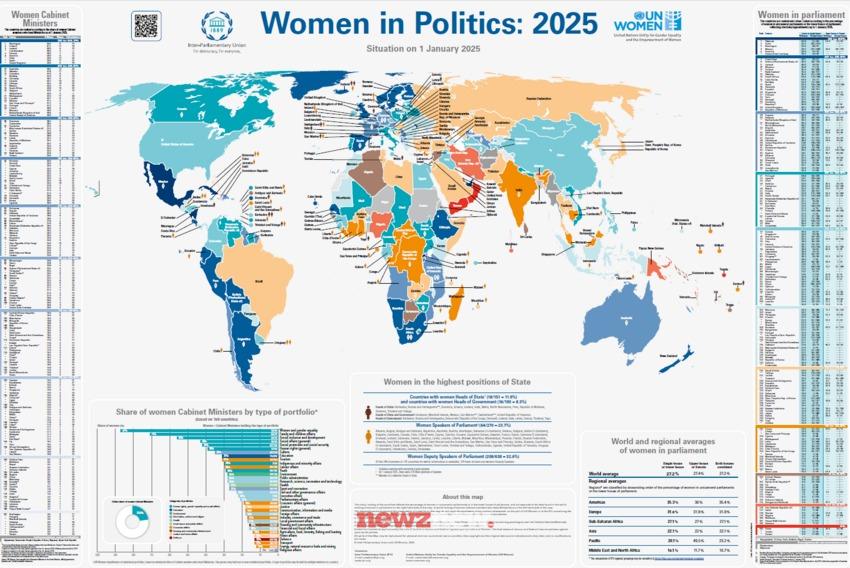Contents
The world in 2025 is in the midst of historic change, with major political upheavals, shifting alliances, and new policies emerging across continents. This article explores “Latest Global Political Developments: What to Watch in 2025”—a comprehensive look at transformative trends and essential events shaping this year’s global landscape.

Trump’s Second Term and New US Policy Directions
With President Donald Trump’s re-election, the United States has turned sharply towards assertive policies with echoes around the world. Top stories include an announcement of a proposed 100% tariff on films produced abroad, leading to outrage among global media circles, and incented inducements for illegal immigrants to self-deport—providing monetary assistance through government apps. These actions have led to intense domestic and international discussion regarding ethics and legality.
In commerce, Trump’s economic policy brought fluctuating tariffs with bilateral bargains for major partners, while having minimum tariffs for other partners. US tariffs on Chinese and Indian goods have tested relations and invited global rebalancing, putting pressure on the EU to do the same. The economic and legal effect of such policies is significant, spurring destabilization as well as ferocious legal scrutiny in cities throughout America.
Global Alliances: Reconciliation, Division, and Diplomacy
2025 represents a cautious thaw in UK-EU relations, with historic summits at new UK leadership promising possible cooperation following the Brexit hangover of the past few years. The discussions are intended to create mutual security values and defense accord, although immediate concrete results, such as access to EU defense budgets, are gradual to come.

Diplomatic de-escalation is the new norm in the Indo-Pacific. The US and China are edging towards a trade deal, shelving tariffs and easing essential tech export controls. Even as India deepens strategic engagement with China and Russia, its tension with the US on tariffs and energy commerce continues to weigh. The balance of power in the region is changing, with China solidifying presence through Belt and Road plans and bilateral pacts.
Military Escalation and Security Threats
Conflict is a front-page staple, particularly in the Middle East. Israel’s widening military operations—in Gaza, Syria, and Lebanon—are indirectly US-approved, igniting unrest and endangering long-standing peace accords. European powers have set in motion “snapback” sanctions against Iran, while the Houthis keep Red Sea trade disrupted. The likelihood of ongoing escalation, not diplomatic solution, is high.
Russia’s war against Ukraine continues with mounting missile attacks, territorial victories, and no diplomatic breakthrough even when direct Trump-Putin summits yielded no ceasefires. Western economic pressure in the form of hybrid escalation (sanctions, tariffs) is met with counter-retaliation in the guise of cyber attacks against European nations.
Country Snapshots: Instability and Change

Mexico struggles with cartel violence, which has claimed nearly 200,000 lives in six years. President Claudia Sheinbaum’s strategies are targeting the growth of social programs and prevention led by intelligence, whereas the US offers direct military intervention—heightening sovereignty and diplomatic tensions.
India grapples with export losses from US tariffs and border skirmishes with Pakistan, testing tenuous ceasefire arrangements. Internal policies leave millions off citizens’ rolls, while growing proximity with China and Russia point towards new foreign policy directions.
Nigeria is involved in diplomatic intensification with BRICS nations and chronic security issues. Food insecurity and terrorist violence are lingering issues.
Sudan, Democratic Republic of Congo, and Pakistan are also facing internal conflict, insurgencies, and political polarization. Destabilization of security is severe, fueled by conflicts over territory, proxy militias, and weak governance.
Political Polarization and Conservatism
A strong turn toward conservatism and national sovereignty can be seen around the world in 2025. Poisonous political rhetoric is fueled by extreme parties, propelling most democracies toward more polarized and occasionally dysfunctional governments. This relapse into “G-Zero”—in which global governing institutions disintegrate and authority becomes lodged in strongmen—resembles the volatility of the early Cold War.
Critical Global Events to Watch
The last quarter of 2025 is a calendar filled with critical summits and elections:
Japan’s Liberal Democratic Party leadership race, ASEAN Summit in Malaysia, and APEC in South Korea will determine regional agendas.
The US midterm elections may transform the power balance in Congress, while special legislative elections become stand-ins for greater polarization.
UN Climate Summit in Brazil and G20 in South Africa gather leaders to discuss climate, trade, and geopolitical risk.
Parliamentary elections in Iran and Iraq, in the midst of rising violence, will challenge the boundaries of diplomatic gains and stability.
Technology, AI, and Climate
The world tech race heats up with AI policy elucidations and the expansion of energy infrastructure. The US AI Action Plan ties federal funds to state adherence on essential concerns, ranging from climate change to disinformation. China’s latest tech plan focuses on self-reliance and increased capabilities, with rare earth exports as the most important bargaining tool in US talks.
At the same time, clean energy breakthroughs come; nuclear power capacity rises in China and India, while wind and solar power exceed coal. Increasing energy demands from data centers add new pressures to power grids, and climate policy shifts, particularly in the US, continue to define the speed and impact of environmental action.
2025 is a tumultuous geopolitical landscape in which states adapt to changing alliances, rising threats, and persistent crises. Whether through policy-making that makes headlines, military build-up, or fresh efforts at diplomacy, the year is one of uncertainty and possibility. As states adapt to pressures from outside as well as divisions within, choices and allegiances created now will determine directions for years to come.
For political leaders, investors, and citizens of the world, keeping track of these changes is more essential than ever. The months ahead hold promise for more stunning changes—both opportunities and challenges—in a more integrated, argumentative globe.






